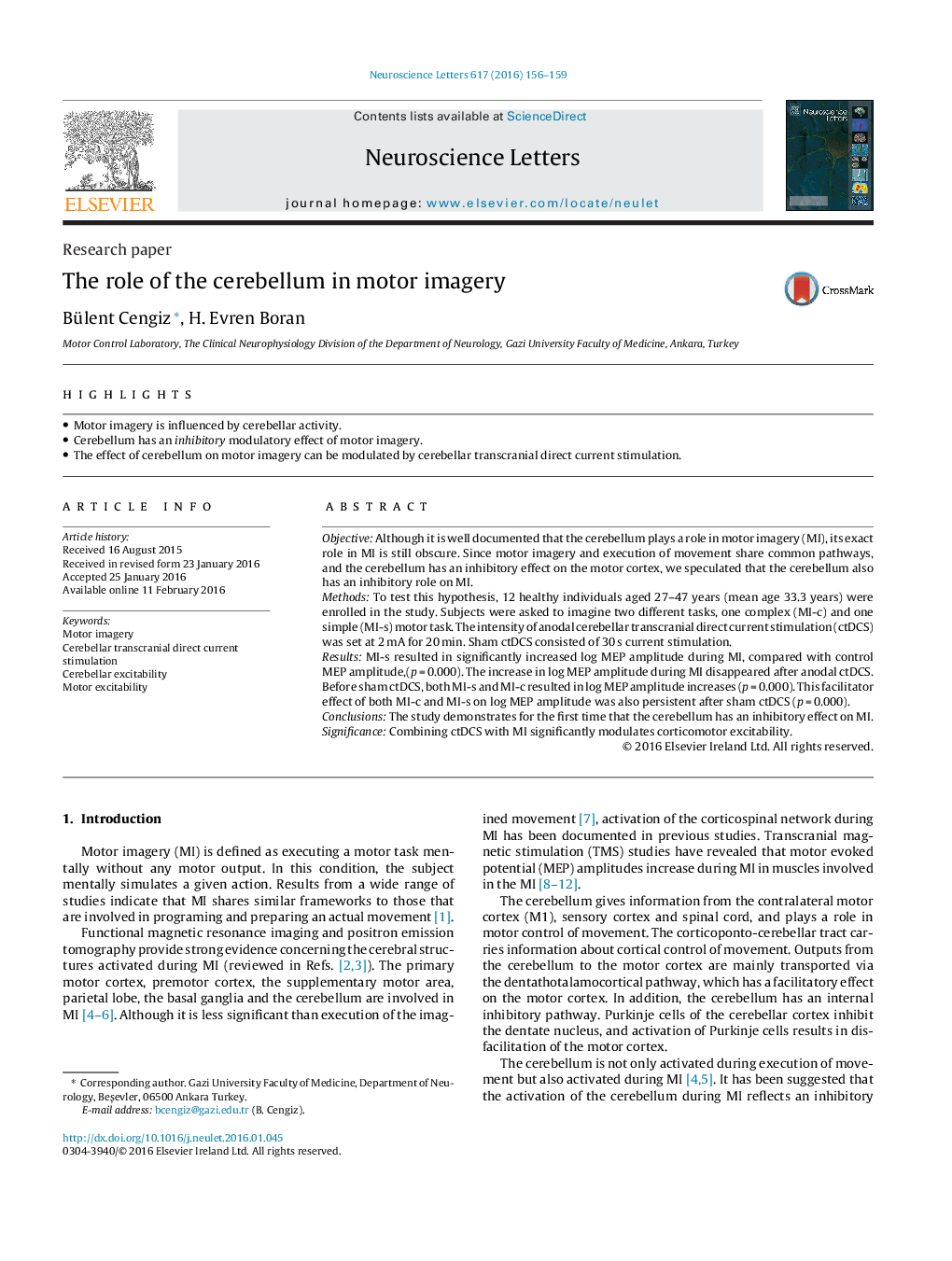| Article ID | Journal | Published Year | Pages | File Type |
|---|---|---|---|---|
| 6279946 | Neuroscience Letters | 2016 | 4 Pages |
â¢Motor imagery is influenced by cerebellar activity.â¢Cerebellum has an inhibitory modulatory effect of motor imagery.â¢The effect of cerebellum on motor imagery can be modulated by cerebellar transcranial direct current stimulation.
ObjectiveAlthough it is well documented that the cerebellum plays a role in motor imagery (MI), its exact role in MI is still obscure. Since motor imagery and execution of movement share common pathways, and the cerebellum has an inhibitory effect on the motor cortex, we speculated that the cerebellum also has an inhibitory role on MI.MethodsTo test this hypothesis, 12 healthy individuals aged 27-47 years (mean age 33.3 years) were enrolled in the study. Subjects were asked to imagine two different tasks, one complex (MI-c) and one simple (MI-s) motor task. The intensity of anodal cerebellar transcranial direct current stimulation (ctDCS) was set at 2 mA for 20 min. Sham ctDCS consisted of 30 s current stimulation.ResultsMI-s resulted in significantly increased log MEP amplitude during MI, compared with control MEP amplitude,(p = 0.000). The increase in log MEP amplitude during MI disappeared after anodal ctDCS. Before sham ctDCS, both MI-s and MI-c resulted in log MEP amplitude increases (p = 0.000). This facilitator effect of both MI-c and MI-s on log MEP amplitude was also persistent after sham ctDCS (p = 0.000).ConclusionsThe study demonstrates for the first time that the cerebellum has an inhibitory effect on MI.SignificanceCombining ctDCS with MI significantly modulates corticomotor excitability.
